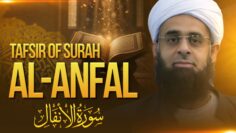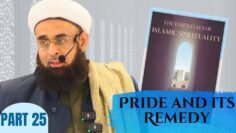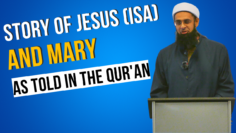
The Quest for Prophetic Equilibrium: The Revival Tradition of Deoband
The Quest for Prophetic Equilibrium: The Revival Tradition of Deoband
A sense of community based on a shared faith; hundreds of students wearing traditional clothing with a white cap atop their head; the melodic sound of teachers reading from traditional Arabic texts as students take meticulous notes and send salutations on the Beloved Messenger (Allah bless him and give him peace). Most of us can’t recall the early years of our lives, but there are certain formative experiences that are etched within us and continue to shape us into adulthood. To this day, for me, the years spent in a Deoband seminary (madrasa) evoke nostalgic memories of energy, optimism, and vibrancy. Growing up, the most pivotal figures in my life, such as my father, grandfathers and at least two uncles, were immersed within the Islamic educational tradition. Their education within the Deoband system had a lasting and profound impact on how our home functioned and on my intellectual pursuits. When I first entered a Deoband seminary, I did not fully appreciate the depth, nuance, and scope of its instructional method. However, when I exited years later, I was awakened to the advantages of its methodology—modes of instruction and teaching that I continue to benefit from and have chosen as the pathway for my own children.
My training in the Islamic sciences began at Darul Uloom Bury, the oldest and first full-fledged Islamic seminary established in the UK probably of any Islamic intellectual tradition, and perhaps, the first outside the Indian Subcontinent and Muslim world. In later years, I had the opportunity to study across four continents and travel to more than fifty countries, spending time studying with scholars in places such as India, South Africa, and Syria. My travels led me to meet countless teachers, learning and benefitting from their practices and traditions. I then completed my doctorate work at SOAS, University of London. Being in that setting gave me an intimate understanding of the Western model of academia and its intellectual rigor. These different educational experiences made me more appreciative of the vision and teaching methods employed by the Deoband system and how it nurtures a wholesome love for the Prophetic way.
Being in these diverse settings also gave me a first-hand vantage point; I was able to see other educational approaches and traditions in motion and experience being part of them. Despite the benefits and strengths of each, it was the Deoband model that left the most indelible impact on my educational and spiritual development. While for some, being in different educational milieus may bring about confusion, uncertainty, or mixed loyalties; for me, the exposure to other systems and traditions cemented the beauty of the Deoband tradition, its teachers, and students. I have never felt the need to trade it for a different tradition, even though I have benefited from others and hope to continue to do so.
Some of the modalities of learning I saw relied on a singular focus. Certain sufi groups, for example, actively discouraged students from studying fiqh, hadith or any other Islamic discipline and advocated for complete immersion in the service of their mentor and tradition. Other groups called for study of hadith without contextualizing its knowledge with an understanding of fiqh. Some movements focused purely on political aspects and engaged themselves in vigorous activism, always thinking about others, but neglecting their own basic devotion and practice. Some focused on learning, but were lax or even disdainful about the outer expression of the Prophetic Sunna. What I realized through my exposure to these various groups was the equilibrium inherent within the Deoband system.
Throughout history, there have been movements that holistically addressed the educational and spiritual needs of a community. At its core, the Deoband movement brought balance to the study of advanced Arabic, its grammar (nahw) and literature (adab), theology (‘aqida), Qur’anic exegesis (tafsir), prophetic traditions (hadiths), sacred law (fiqh) and its principles (usul), and spirituality (tasawwuf), where each informed and perfected the understanding of the other branch providing a much needed synthesis—a student of knowledge was incomplete until he grasped the realities of both the inner and outer aspects of faith. I realized the teachers of the Deoband system valued having this complete system of education. No branch was elevated above another; rather, each was important in how it connected to the other and led to growth. What benefit is there in a jurist who has not wrestled with purification of his inner ego, a gnostic that lacks clarity on the limits of the sacred law, or an activist who loses focus of the sacredness of his mission and does not carry the guiding lights of fiqh and ‘aqida. It is only when these conditions are in harmony with one another that a person is opened to the beauty of Islam and the Prophetic equilibrium. The six-to-ten-year seminary course, sometimes referred to as the Dars Niẓāmī, but now only vaguely related to the original in its condensed and modified version, if studied well, is unparalleled anywhere for its comprehensiveness and scope. Its culminating year of study, known as dawrat al-ḥadīth, or, dawra-i ḥadīth, immerses the students in the unique system of reading the six canonical hadith collections, including Ṣaḥīḥ al-Bukhārī and Ṣaḥīḥ Muslim, an experience probably not found elsewhere.
During my travels, I had also seen that colleges, seminaries and universities associated with many traditions were primarily for the benefit of men. While these schools focused on one segment of society, the Deoband model stood in stark contrast. Its approach was inviting, open, and simultaneously invested in the educational nurturing of men, women, and children, fulfilling the recommendation of studying from cradle to grave, by establishing schools for each. As students graduated from the founding seminaries in Deoband and Saharanpur, and later ones in Moradabad, Karachi, Lahore, Dabhel and Rander, they purposefully established more and more madrasas everywhere they went. It was the case of one lamp lighting another, and very soon it led to an exponential growth in the number of schools across the world, and allowed for easy and open access to traditional knowledge. While other renowned and historical institutes, such as Al-Azhar in Cairo or the Qarawiyyin in Fez, required you to travel to their countries, the Deoband system was being exported worldwide, making its educational platform accessible to anyone interested. The number of educational institutions established through the efforts of Deoband graduates can be seen around the world and are literally beyond enumeration.
The result is an ever-growing number of male and female scholars, capable of answering religious questions and teaching the masses, working to carry on the tradition of their teachers. Along with their teaching in maktabs, mosques, seminaries, and online, graduates have produced a prolific amount of written literature on nearly every Islamic subject, primarily in Urdu and Arabic, and now increasingly so in English and other world languages. For instance, there are over twenty multi-volume fatwā collections produced by muftīs trained in the Deoband tradition that provide much-needed resource on novel issues in current times and a legacy for time to come.
Countries such as the UK are a further testament to the success of the Deoband system in educating across ages and genders and introducing new generations to the Qur’an and Sunnah. For instance, within seven miles of where my humble abode is in London, there are approximately fifteen seminaries of various sizes where the full curriculum to an advanced level is taught to males and females, and probably four times as many maktabs (beginner schools) for children. The number of ḥuffāẓ (memorisers) of the entire Qur’an that graduate from Deoband madrasas and local after-school maktabs is impressive and probably unmatched in the West, with maybe a thousand just in my area of London alone. For myself, the creation of Whitethread Institute is a way to pay homage to what I have gained from the Deoband system, to continue its legacy in the West at a postgraduate level, and to fill the gap for the thousands of English-speaking madrasa graduates around the world.
Also, if we were to look around just the various boroughs of London, one would notice the vibrancy of Islam in those areas that are served by male and female graduates of Deoband seminaries. They offer multiple classes, lectures, seminars, and other activities for nearly all segments of the community; children, stay-home mothers, working women, youth, and adult men. There is a stark difference between those boroughs and the other areas of London where home-grown graduates do not exist. This heritage is the product of the sacrifices of the first residents of these areas, working class people who were inspired by the elders of the Deoband tradition in their countries of origin, and who made these areas home. Wherever they went, they first established mosques, nearly always with an adjoining maktab for their children. They nearly always brought their scholars with them to teach and to lead them in prayer. Then, when their children were old enough, they sent them off to study at madrasas in the UK or abroad, so they could return and cater for the needs of the community with their acquired knowledge. They are reaping the fruits of this today in these areas.
As someone who has found a home in the Deoband system, I see the greatest challenge now as nurturing its growth and allowing it to continue its reform work and flourish, especially in a Western context. The mistake would be to take the system, in its entirety with its minutiae, and simply transplant it. The world has changed more in the last few decades than it probably had for the last several centuries. A case in point is the change in the jamra pillars that a pilgrim pelts as a rite of the pilgrimage. In a National Geographic picture story from 1953, the pillar was maybe the height of two humans. During my first visit for ḥajj in 2001, it had been extended to the height of three stories due to the increase of pilgrims. However, after 2004, the pillars were replaced by a 26-metre-long (85 ft) wall that now rises five stories. Changes in global transportation among other things have required this to happen. I would guess that the short pillars from 1953 would have been the same pillars for the preceding centuries and have only grown exponentially in the last few decades, symbolizing the changes in the world. The world has changed in technology, communication, social media, industry, finance, military, transport, science, mass production techniques, secularism, capitalism, liberalism, post-modernity, globalization, and even biology, which obviously requires adaptations of some viewpoints. The civilisation of Muslims today, is no longer, and cannot ever be again, purely spiritually ‘Islamic’ in all its contents. A fatwa that was relevant for a village in rural India before may not reflect the reality for even a small town in the UK or Norway now; the dynamics, attitudes, social practices have completely changed.
The formula for success will be in how the scholars of Deoband continue to balance adherence to the sacred law and the essence of legal edicts with the realities of living in a non-traditional world as they have always done. The Deoband system and world view has from its inception been one of reform and contextualisation. The legacy they inherited from Shaykh Aḥmad Sirhindī (d. 1624), the Waliyyullāh family (1700s), Sayyid Aḥmad Barēlwī Shahīd (d. 1831), and Shah Muhammad Ishaq Dihlawi (d. 1846) and beyond has been reformist. Much work is being done in this regard now, especially at madrasas in Karachi, through annual seminars held by the Jamiat-i Ulama and the Islamic Fiqh Academy in India, and at other seminaries and institutes in the UK and South Africa, to name but a few. Our late Shaykh Yusuf Sulayman Motala (d. 2019) has blazed a pioneering path through his graduates at the Darul Uloom in Bury for what Islamic scholarship should look like in the 21st century in the West. Interestingly, this is becoming ever more relevant for the East too as globalisation and social media spreads its tentacles in all directions. The need to traverse the old and the new many a time leads to a chasm of sorts between those who do not embrace change easily and those who advocate for a more conciliatory approach. As a student of the Deoband system, I firmly believe the continued success of the tradition depends on scholars pushing for the middle path—those who balance the spirit of the law with the reality of where we find ourselves, as has been the hallmark of its founders.
Unfortunately, just like with any other system, there are weaknesses and deficiencies to be found within the tradition. Not all seminaries are perfect. Not all Deoband inspired movements are flawless. Not all scholars who have been tutored under the tradition are exemplary. Perfection belongs only to Allah Most High and His Messenger (Allah bless him and give him peace). There are also some who have drunk from the fountains of the Deoband tradition, and the sacred knowledge they possess has been acquired from its streams and oceans, but for one reason or another they have become disenchanted. There are those who say one must not wear the Deoband affiliation on their sleeve, while others even call for giving up the affiliation altogether. While I agree that it should not be an overt badge to carry, giving up affiliation entirely or being embarrassed by it would be ingratitude of the highest order. I would argue that many of the people who find themselves with a voice today as Muslim scholars may never have been honoured with an advanced study of Islam at all, had it not been for their parents’ affiliation to the Deoband tradition, either through Tabligh Jamat or connection with its scholars; they would probably not have studied the religion in such depth or chosen the sacred scholarly path. Opportunities for an advanced study of the faith are just not so widely available, if at all, outside of the Deoband tradition in many countries around the world; especially in the West. There is a lot to give thanks for.
Unfortunately, there is a lack of knowledge of the tradition, its founding struggles, its profound and comprehensive vision, and maybe even a lack of access to good representatives or role models in some places. Many are unaware of the giants of this tradition, the founders, their heritage, efforts, knowledge, insight, intellectual acumen, spiritual light, and worldview. Some are left bewildered, wondering what is so significant about the Deoband tradition and its people. The tradition could never have spread and endured over multiple generations for over one and a half centuries had it not been one of substance. It could have never inspired for so long or enthralled the minds of so many men and women. The intellectual acumen and formidable visionary force of Imam Qasim Nanautawi (d. 1880), the spiritual insight and the zero-tolerance attitude to reprehensible innovations of Shaykh Rashid Ahmad Gangohi (d. 1905), the academic prowess and prolific writings of Hakim al-Umma Mawlana Ashraf ‘Ali Thanawi (d. 1943), the sincere and unrelenting missionary zeal of Mawlana Ilyas Kandhlawi (d. 1944), and the soft power and spiritual emanations of their mentor par excellence Haji Imdadullah (d. 1899), help lay the solid foundations of this reformist movement of classical Islam. They were simply inheritors, interpreters, and revivers of the great luminaries of the past, and guides and pioneers into the future. So vital has their work been that in its outlines and bases it remains to our day unshaken and intact. The world would have been a very different place today had it not been for the tradition.
The need to establish the seminary in Deoband arose from the cataclysm of the mutiny against British rule in 1857, its invasive reforms, harsh land taxes and persecution of many Muslim scholars. Thousands were put to death, five hundred in Delhi alone, for supporting the independence movement. Many of the earlier madrasas in Delhi (about one thousand) and other places had been destroyed or dismantled. Christian missionary activities had been significantly stepped up. Scholars therefore felt an urgent need to establish several madrasas in key locations across the northern part of India to preserve Islamic teachings and produce scholars that could continue to rejuvenate and preserve people’s faith. After some deliberation, Deoband, in the Northern Province, was chosen as a location for the first seminary, and the Dar al-‘Ulum was founded there. The first lesson took place under a pomegranate tree in the courtyard of the Chatta Masjid, and interestingly both the first teacher’s name and that of his first student happened to be Mahmud al-Hasan. This was followed six months later by the Mazahir ‘Ulum seminary in Saharanpur among several others.
Mazahir ‘Ulum had more senior teachers and at the beginning may have attracted more students, many even from outside the country. The scholars at Deoband however were more active in politics, and over time Deoband became more renowned and influential, even though the various madrasas always enjoyed close affiliation with one another. In a stark contrast to the past, the teaching at both Deoband and Saharanpur was organised in a very systematic way. This included formal administration, fixed staff and a syllabus collectively taught by the teachers, which was a departure from the earlier tradition of students studying with individual teachers, receiving authorisations, and moving onto other teachers, with no formal exams or the like. The new system was hugely successful and was replicated as other seminaries were established.
The other more significant change they implemented was to run on donations (however meagre) from the general public, rather than rely on larger endowments from rulers or the national treasury. Funding for Islamic education had been stopped by the British anyway, who were establishing their own schools and granting jobs to those who conformed to their way. Therefore, a sustainable source of funding could only be the general public, and the founders also felt that this increased their reliance upon Allah, rather on any one worldly source. Above all, it also allowed for them to remain completely independent of outside influences, something they have guarded fiercely until today. These are some of the details of the humble beginning of this great movement. I would doubt that the founders of the Dar al-‘Ulum ever envisaged the education and ethos and the spirit and tradition they imparted at their seminary (and sister seminaries) to spread all over the world and become one of the most influential reform movements in modern Islam. That is what it became.
It is through the legacy of their balanced approach that I see students young and old alike inspired to advance spiritually and further the reach of the Prophetic tradition—one that continues to etch itself in the fond memories of our world’s future scholars and inculcate a love for our Lord and His Messenger (Allah bless him and give him peace) for generations to come.
Abdur-Rahman Mangera
London, UK
October 2021











